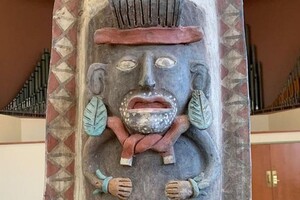According to the researchers, the prolonged drought led to civil conflict.

An international group of scientists concluded that Mayapan – the cultural and political capital of the Mayan civilization – collapsed due to prolonged drought. It led to a civil conflict, which in turn caused a political collapse, reports Science Alert.
People who lived in the city were forced to move to smaller and safer settlements.
Read also: Scientists told about advanced dentistry in the ancient Maya
The publication emphasizes that the research not only gives us an idea of the history of this ancient people. It can also show us how climate change affects even the most stable and developed communities.
“Multiple data sources indicate that civil conflict increased, and generalized linear modeling links urban unrest to drought between 1400 and 1450 AD. We believe that prolonged drought exacerbated tensions between rival factions, but subsequent adaptations show regional resilience, ensuring that Maya political and economic structures persisted until contact with Europeans in the early 16th century AD,” the researchers wrote in their published articles.
The scientists studied data on changes in the composition of the population, climate changes and the diet of the ancient Maya, which were obtained during previous studies. They also added a new analysis of human remains for signs of trauma that would indicate armed conflict.
Scientists found a correlation between increasing rainfall and population in the region, as well as decreasing rainfall and increasing conflict. According to the researchers, a prolonged drought in the years 1400-1450 led to the fact that the inhabitants left Mayapan.
Scientists believe that the lack of water affected farming methods and trade routes, creating an additional burden on the city's residents. As food became scarcer and the situation became increasingly dangerous, residents increasingly died or moved to other settlements.
Researchers noted that in the last mass grave excavated before the city was finally destroyed abandoned, most of the remains belonged to members of the Kokom family (head of state). They perished as a result of rivalries with other groups and general social tensions.
“Our findings confirm the institutional collapse of Mayapan between 1441 and 1461 AD, which resulted from civil conflict fueled by political rivalries and ambitions, and rooted in the social memory of the Yucatec peoples, whose evidence was included in the written records of the early colonial period,” the researchers said.
Previously, scientists from the University of Cincinnati found out why the inhabitants left the ancient Mayan city of Tikal
strong>. According to them, the location of the city was not very good from the point of view of water supply, so its inhabitants relied only on rainwater.




